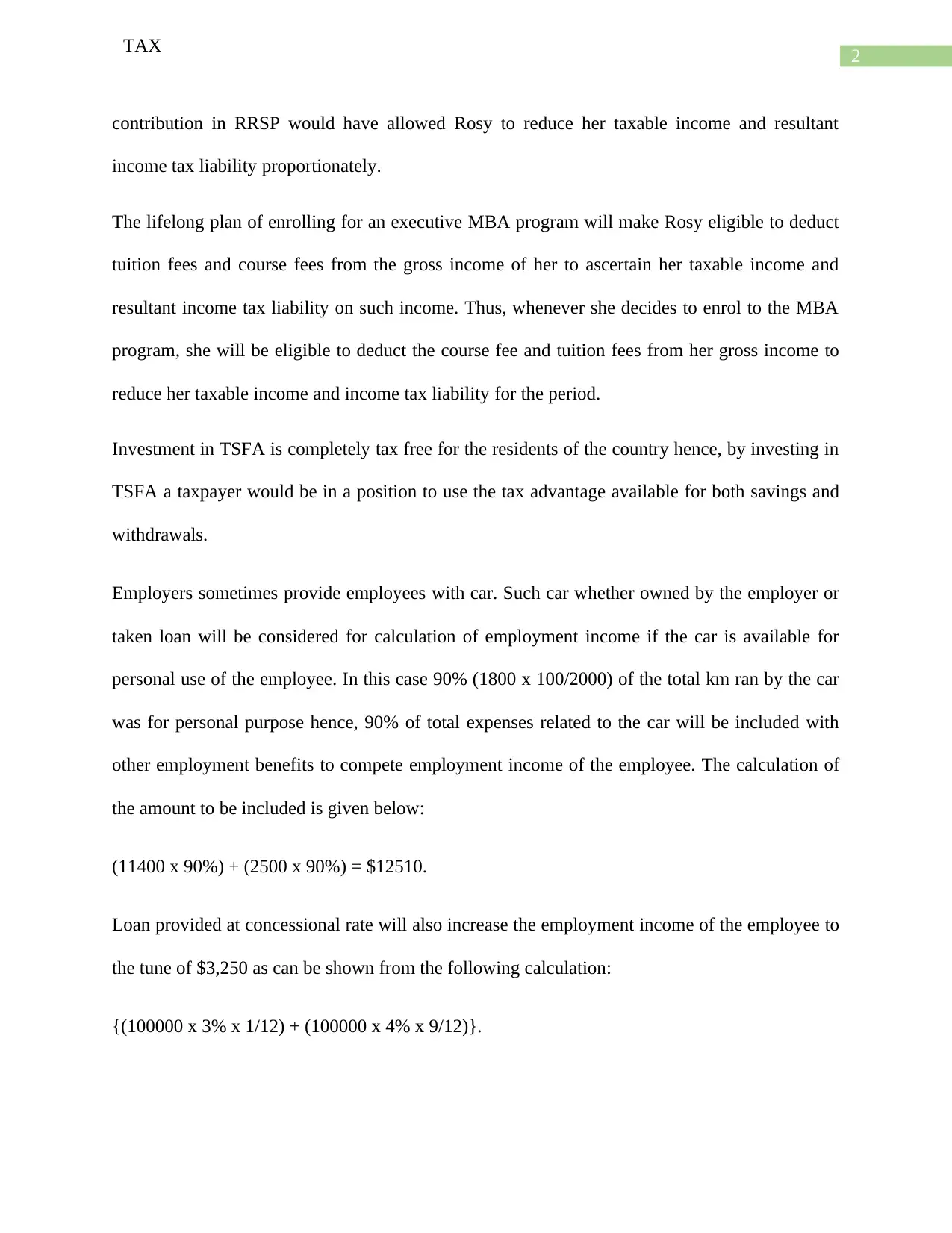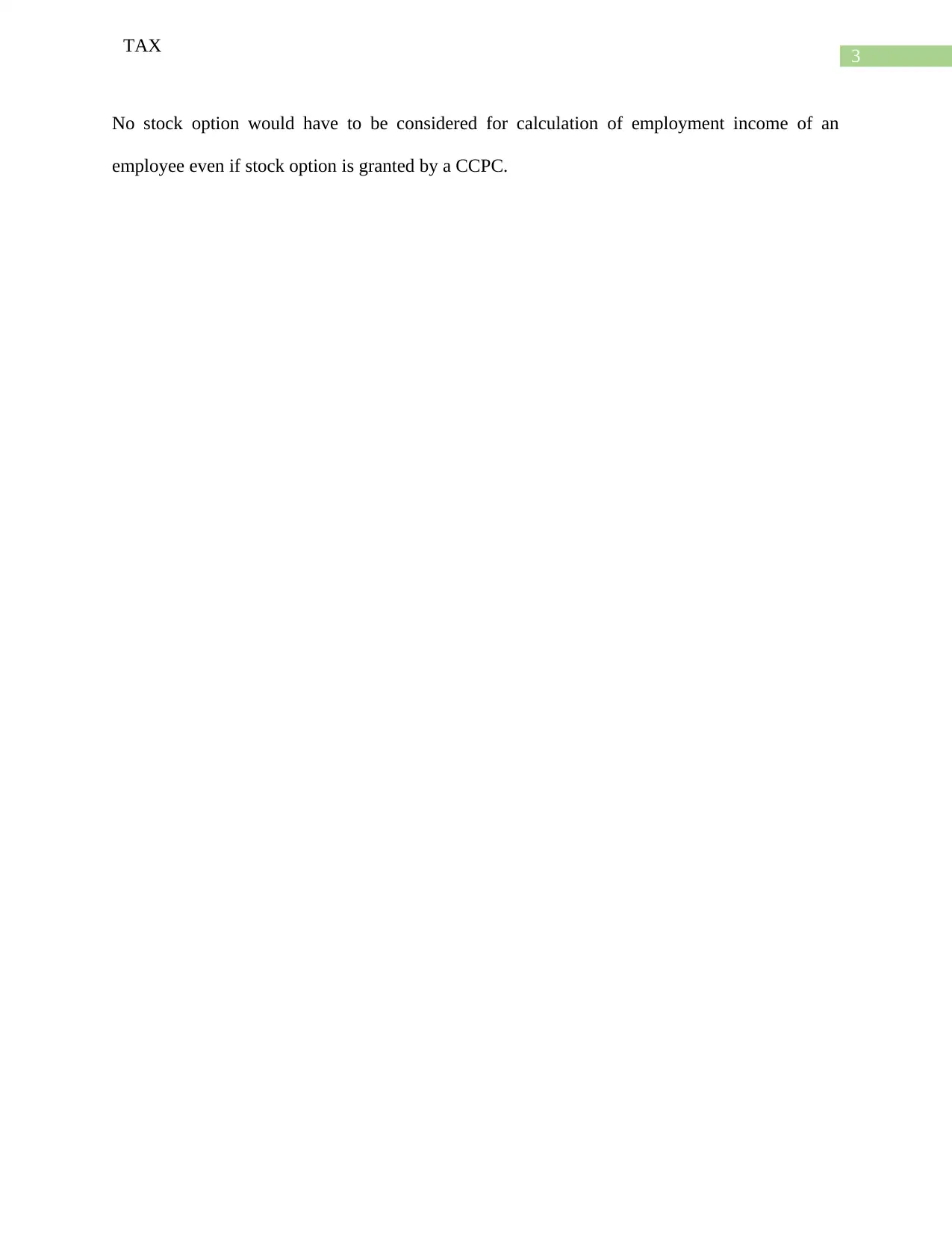Detailed Income Tax Implications Report for Rosy Evans, 2019
VerifiedAdded on 2022/07/29
|4
|627
|10
Report
AI Summary
This report analyzes the income tax implications for Rosy Evans, a resident of Canada, based on her 2019 income tax return. The report addresses various aspects of her tax situation, including the deductibility of medical expenses for her mother, the benefits of RRSP contributions, and the tax advantages of investing in a TFSA. It also examines the impact of employment income, including car benefits and concessional loans, on her overall tax liability. The report highlights potential tax-saving strategies, such as maximizing RRSP contributions and understanding the tax implications of her future MBA program. The analysis includes specific calculations related to employment income and provides recommendations for optimizing her tax position. The report also discusses the tax treatment of car benefits, including the calculation of taxable benefits based on personal use. Overall, the report provides a comprehensive overview of Rosy Evans' tax situation and offers actionable insights for tax planning.
1 out of 4











![[object Object]](/_next/static/media/star-bottom.7253800d.svg)